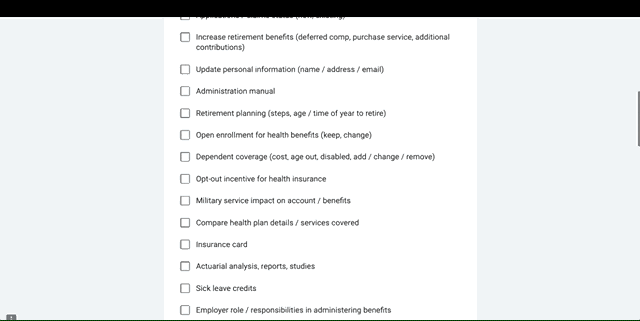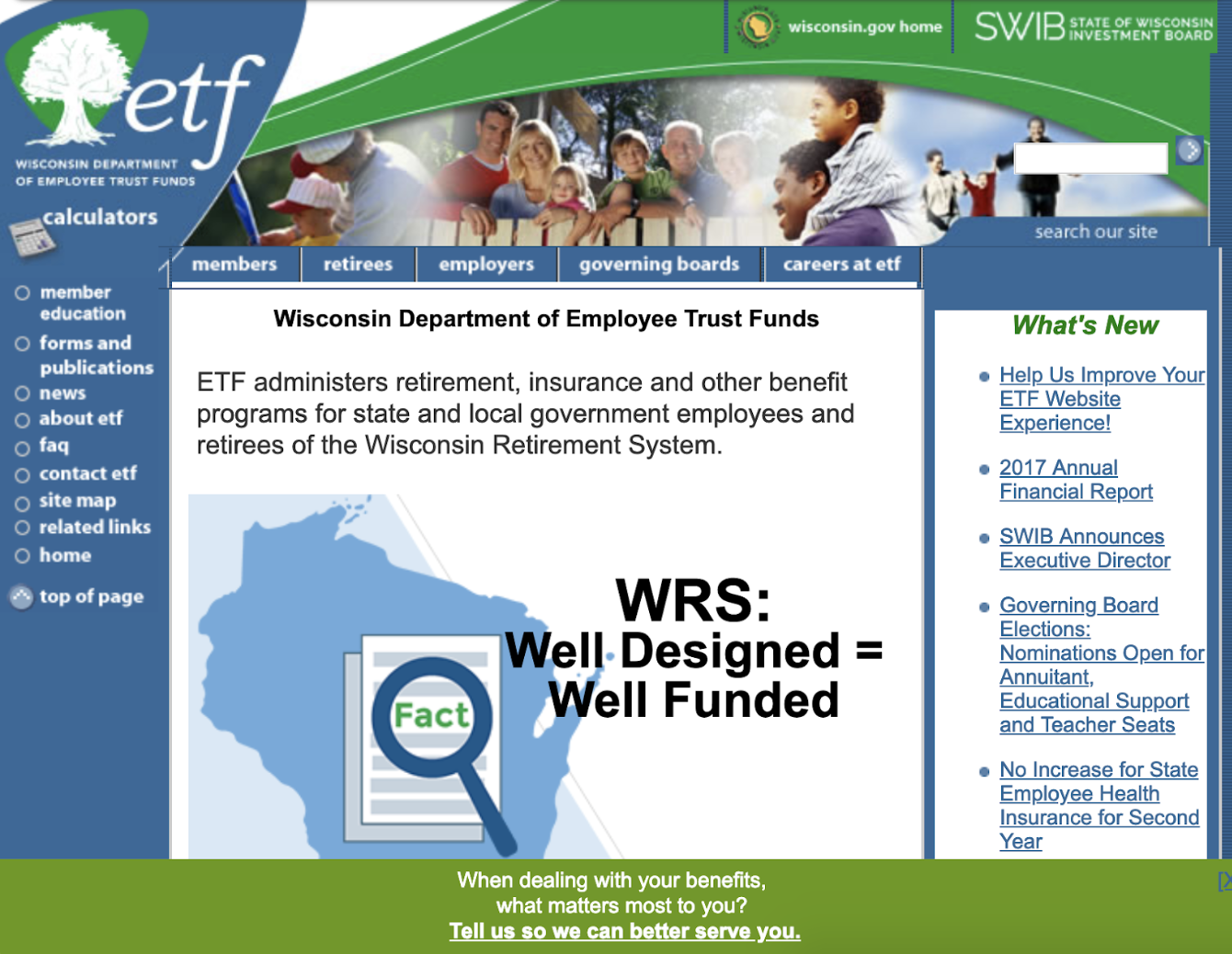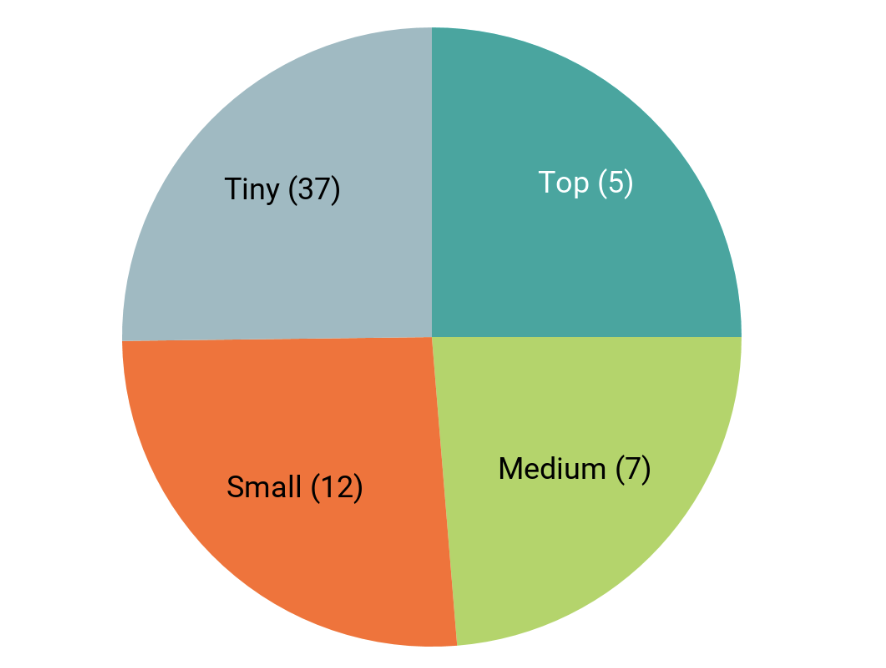Mastering Top Tasks Methodology: Enhancing Customer Experience and Organizational Value
How we used Gerry McGovern’s Top Tasks methodology to create an audience-centered navigation and site architecture for our client, the Wisconsin Department of Employee Trust Funds.
Websites can be complex beasts, and often times a site’s navigation and wayfinding gets tied up in the politics and interests of different business units within an organization. Many stakeholders can translate to competing priorities, but websites should always put the interests of one audience first: the site user.
As part of a larger project for the Wisconsin Department of Employee Trust Funds, we tackled the challenge of creating an audience-centered navigation and site architecture using the Top Tasks Identification method.
What is Top Tasks Identification?
Developed by customer experience researcher and advocate Gerry McGovern, Top Task Identification focuses on asking the organization’s audience to rank what they find most important in completing their tasks.
In order to make the biggest improvement to an ETF customer's experience, we needed to restructure the dense, difficult-to-navigate website. Before the redesign, ETF’s content sat behind long, unassuming link lists with no clear indication of where in the website it was located. Even searching on the site would return the oldest (and potentially out-of-date) results first.
While we knew the impact Top Tasks could have to better the website, the keys to success were ETF’s recognition of the problem, and their desire to fix it. These two elements are crucial to using Top Tasks, as organizational buy-in at all stages of the process is fundamental to creating an audience-centric experience.
How to Facilitate a Top Tasks Study
The Top Tasks Identification method can be boiled down into four steps:
- Refining the list of tasks
- Gathering participants
- Analyzing responses
- Leveraging your results
Begin With List Refinement
Top Task Identification is the process of presenting a list of tasks related to a certain domain (such as employee benefits or retirement planning) to a large audience. The audience is asked to pick the five most important tasks from a list of 50 to 80. The long list is designed to overwhelm participants so their gut instinct kicks in and the tasks they truly care about jump out at them.

The task list itself is culled down from a list of about 300 tasks gathered from a range wide of sources such as previous audience research, site analytics, search term data, user journeys, interviews, and call center support logs.
Over the course of four weeks — together with a core team of ETF project stakeholders — we refined the list down to a final 62 items that best represented mutually exclusive, unique tasks related to employee benefits.
Gather Participants
Top Task Identification works best when there’s a large number of participants taking the survey. In order to increase the odds people would take the survey, we made several decisions about where and how we distributed it.
First, we set a prominent, sticky footer on the homepage and other key pages on the website. Second, and more importantly, we phrased the ask to be audience-centric (“What matters most to you?”) instead of organization-centric (“We’re improving our website, help us...”). In order to signal ETF’s commitment to building a site that fits customers’ needs, we stressed the audience focus in all communications about the survey.

On the ETF project, our methods were rewarded almost immediately. Within the first 24 hours of the survey being linked from the homepage, the survey had over 900 responses. By the time it closed two weeks later, there were a total of 1,710.
Analyze Responses
After the incredible response from Wisconsin government employees, retirees, and employers, we were excited to analyze the results. Top Tasks Identification methodology argues that top tasks are universal, stable topics that the audience considers most important to them, and those tasks are probably different from what the organization thinks to be most important.
True to form, out of 62 items to choose from, five tasks received the top 25% of the vote—our true top tasks. On the other end of the list, it took 37 “tiny tasks” to earn the same percentage of votes.

Leverage Results
With our top tasks uncovered, we built on that knowledge with additional user research in order to create an audience-centric navigation structure and website. The Top Task survey told us what audiences cared about, but it didn’t tell us which tasks audiences expected to find in the same location.

To understand how audiences related tasks to one another, we asked ETF internal stakeholders to sort a representative set of tasks into groups using a card sort exercise. After that we ran a series of tests using different menu labels in order to develop our navigation structure and improve the success rate of people completing tasks.
Benefits of Using Top Tasks
The Top Tasks Identification methodology works because it uses real data from an organization’s audience to support where attention should be focused during a redesign or while making incremental improvements to a website over time.
It brings the needs of the customers to the forefront by showing in stark contrast how important certain tasks are to them compared to the total amount of information available. Now, this isn’t to say that tasks that receive the fewest votes have no place on the website (although one could argue that it should), but rather that an organization should not prioritize its limited time and resources on those “tiny” tasks.
If an organization can agree to set internal politics aside and commit to putting the customer first, Top Tasks Identification can provide a radical way of looking at what audiences say is most important to them.
